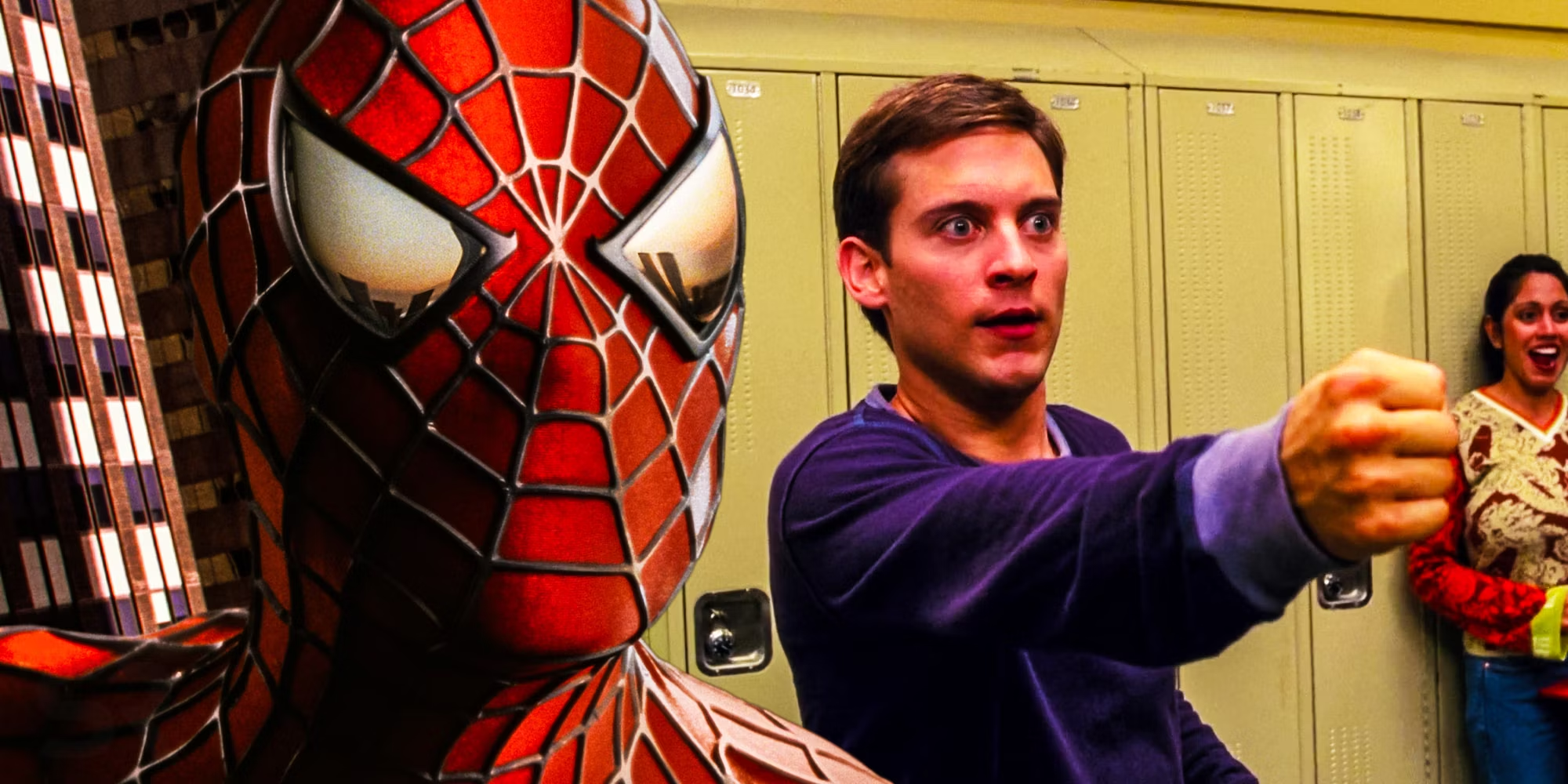As a lifelong comic book fan, I remember the excitement and anticipation surrounding the release of Spider-Man (2002). This film wasn’t just another superhero movie; it was a groundbreaking phenomenon that reshaped the genre. Directed by Sam Raimi, How Spider-Man (2002) Changed Superhero Movies set new standards for comic book adaptations, delighting audiences and critics alike.
Summary:
- Revolutionary Approach: Spider-Man (2002) brought a fresh perspective to superhero movies.
- Directorial Brilliance: Sam Raimi’s vision and style were pivotal to the film’s success.
- Audience Reaction: Fans and critics were overwhelmingly positive.
- Lasting Impact: The film paved the way for future superhero blockbusters.
How Spider-Man (2002) Changed Superhero Movies
A New Era for Superhero Films
Spider-Man (2002) marked the beginning of a new era for superhero movies. Before its release, the genre was often seen as niche, appealing primarily to comic book enthusiasts. However, Spider-Man (2002) demonstrated that superhero films could attract a broader audience and achieve significant box office success. The film’s blend of action, drama, and humor resonated with viewers of all ages, making it a cultural phenomenon.
The Influence of X-Men (2000)
Although X-Men (2000) paved the way for superhero movies by proving their box office potential, Spider-Man (2002) solidified the genre’s mainstream appeal. With a higher budget and cutting-edge special effects, Spider-Man (2002) showcased what was possible in terms of visual storytelling and character development.
Why It Was So Good: Sam Raimi as Director
Sam Raimi’s Unique Vision
Sam Raimi brought a distinctive style to Spider-Man (2002), blending his horror roots with a deep respect for the source material. Raimi’s direction was instrumental in capturing the essence of Spider-Man—his struggles, triumphs, and the duality of Peter Parker’s life. Raimi’s meticulous attention to detail and passion for the character were evident in every frame of the film.

Balancing Humor and Drama
One of Raimi’s greatest strengths as a director is his ability to balance humor and drama. Spider-Man (2002) is filled with moments of levity, such as Peter Parker’s awkward encounters and J. Jonah Jameson’s comedic outbursts. These lighter moments are juxtaposed with intense, dramatic scenes that highlight Peter’s inner turmoil and the high stakes of his double life.
Innovative Action Sequences
Raimi’s innovative approach to action sequences set Spider-Man (2002) apart from other superhero films of its time. The film’s dynamic camera work and groundbreaking special effects created thrilling and visually stunning scenes, such as Spider-Man’s aerial battles and web-slinging through the city. These sequences were not only exciting but also integral to the narrative, enhancing the overall storytelling.
Audience Reaction
Critical Acclaim and Box Office Success
Upon its release, Spider-Man (2002) received widespread critical acclaim and became a box office juggernaut. Critics praised the film for its engaging story, strong performances, and impressive visual effects. Audiences flocked to theaters, eager to see their favorite web-slinger brought to life on the big screen. With a box office gross of over $825 million worldwide.
Tobey Maguire’s Performance
Tobey Maguire’s portrayal of Peter Parker/Spider-Man was a key factor in the film’s success. Maguire captured the character’s vulnerability, intelligence, and determination, making him relatable and endearing to audiences. His performance laid the foundation for future portrayals of Spider-Man and set a high standard for superhero actors.

Fan Reactions
As a fan, I remember the excitement of seeing Spider-Man (2002) for the first time. The film exceeded my expectations, bringing my favorite comic book hero to life in a way that was both faithful and innovative. Many fans shared this sentiment, expressing their joy and admiration for Raimi’s work on online forums and fan communities.
Legacy of Spider-Man (2002)
Influence on the Genre
Spider-Man (2002) had a profound impact on the superhero genre, influencing subsequent films and shaping the landscape of modern cinema. Its success demonstrated the viability of superhero movies as major blockbusters, paving the way for the Marvel Cinematic Universe (MCU) and other franchise juggernauts.
Cultural Impact
The cultural impact of Spider-Man (2002) cannot be overstated. The film’s iconic scenes, such as the upside-down kiss and the Green Goblin’s menacing encounters, have become ingrained in popular culture. It also inspired a new generation of fans and creators, fueling interest in comic books and superhero stories.

Merchandising and Spin-offs
The success of Spider-Man (2002) also led to a surge in merchandising, with toys, video games, and other products flying off the shelves. The film’s popularity spawned sequels and spin-offs, expanding the Spider-Man universe and keeping the character in the public eye.
The Impact on Filmmaking Techniques
Advancements in Special Effects
Spider-Man (2002) pushed the boundaries of what was possible with special effects. The film’s groundbreaking CGI and practical effects set a new standard for visual storytelling in superhero movies. This technical achievement not only enhanced the film’s action sequences but also allowed for more immersive and believable worlds in future films.
Inspiring Future Filmmakers
The success of Spider-Man (2002) inspired many aspiring filmmakers to explore the superhero genre. Directors and writers saw the potential for rich, character-driven stories within the framework of a superhero narrative. This inspiration led to the creation of critically acclaimed films like The Dark Knight and Iron Man, which further expanded the genre’s possibilities.

Pioneering Marketing Strategies
The marketing campaign for Spider-Man (2002) was innovative and highly effective. The film’s trailers, posters, and promotional materials generated immense hype and anticipation. The use of viral marketing and strategic partnerships set a precedent for how superhero films would be marketed in the future, ensuring maximum visibility and audience engagement.
Personal Reflections on Spider-Man (2002)
A Defining Moment for Fans
For many fans, Spider-Man (2002) was a defining moment in their love for comic book characters. It was the first time we saw a superhero film that truly honored the source material while also appealing to a mainstream audience. The film’s success validated our passion for these characters and stories, showing that they could be appreciated by a wide range of viewers.
Building Community
The release of Spider-Man (2002) also helped build a sense of community among comic book fans. We gathered online and in person to discuss the film, share our favorite moments, and speculate about future installments. This sense of camaraderie and shared enthusiasm strengthened the bonds between fans and created lasting friendships.
FAQs
How did Spider-Man (2002) revolutionize superhero movies?
Spider-Man (2002) revolutionized superhero movies by demonstrating that they could achieve mainstream success and appeal to a broad audience. Its blend of action, drama, and humor set a new standard for the genre.
Why was Sam Raimi’s direction crucial to the film’s success?
Sam Raimi’s direction was crucial due to his unique vision, ability to balance humor and drama, and innovative action sequences. His respect for the source material and passion for the character brought Spider-Man to life in a way that resonated with audiences.
What was the audience reaction to Spider-Man (2002)?
The audience reaction was overwhelmingly positive, with critics praising the film’s story, performances, and visual effects. Fans were thrilled to see their favorite superhero portrayed so faithfully and engagingly.
How did Spider-Man (2002) influence future superhero movies?
Spider-Man (2002) influenced future superhero movies by proving their box office potential and inspiring filmmakers to explore the genre’s possibilities. It set a new standard for visual effects, storytelling, and marketing strategies.
What role did Tobey Maguire’s performance play in the film’s success?
Tobey Maguire’s performance was pivotal to the film’s success. He captured Peter Parker’s vulnerability and determination, making the character relatable and endearing. His portrayal set a high standard for future superhero actors.
What is the lasting legacy of Spider-Man (2002)?
The lasting legacy of Spider-Man (2002) includes its influence on the superhero genre, cultural impact, and advancements in filmmaking techniques. It paved the way for future blockbuster franchises and inspired a new generation of fans and creators.

Conclusion
Spider-Man (2002) changed the landscape of superhero movies forever. Sam Raimi’s visionary direction, coupled with strong performances and groundbreaking effects, created a film that resonated with audiences and critics alike. The positive audience reaction, cultural impact, and lasting legacy of Spider-Man (2002) demonstrate its significance in the world of cinema. As a comic book fan, I hold this film in high regard, appreciating its role in bringing my favorite superhero to life and shaping the future of the genre.

